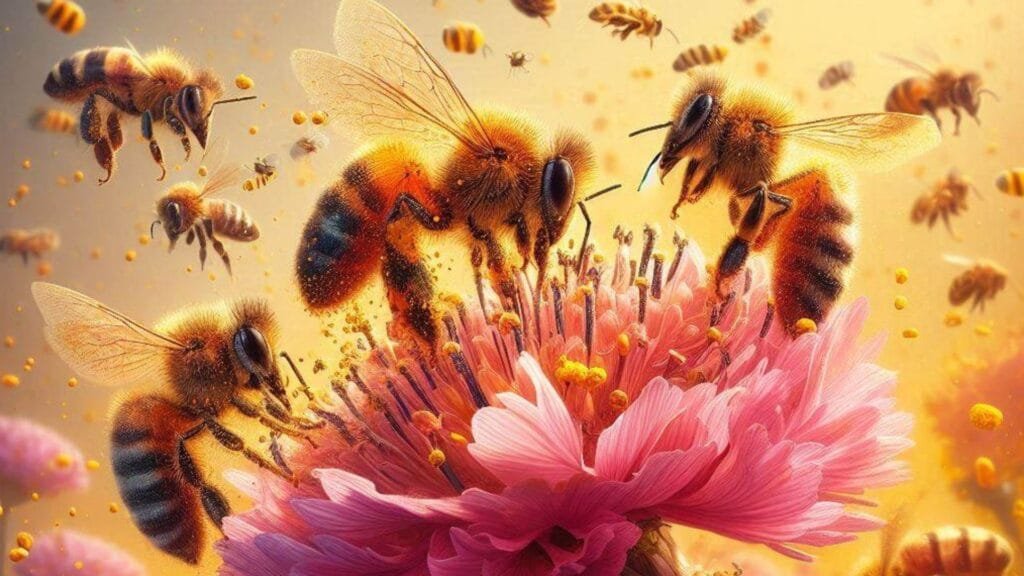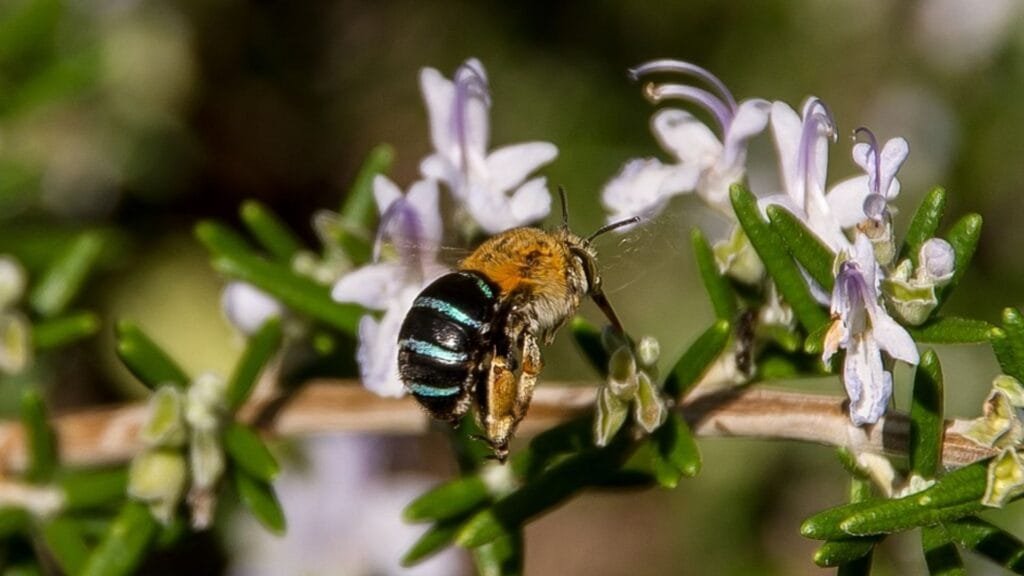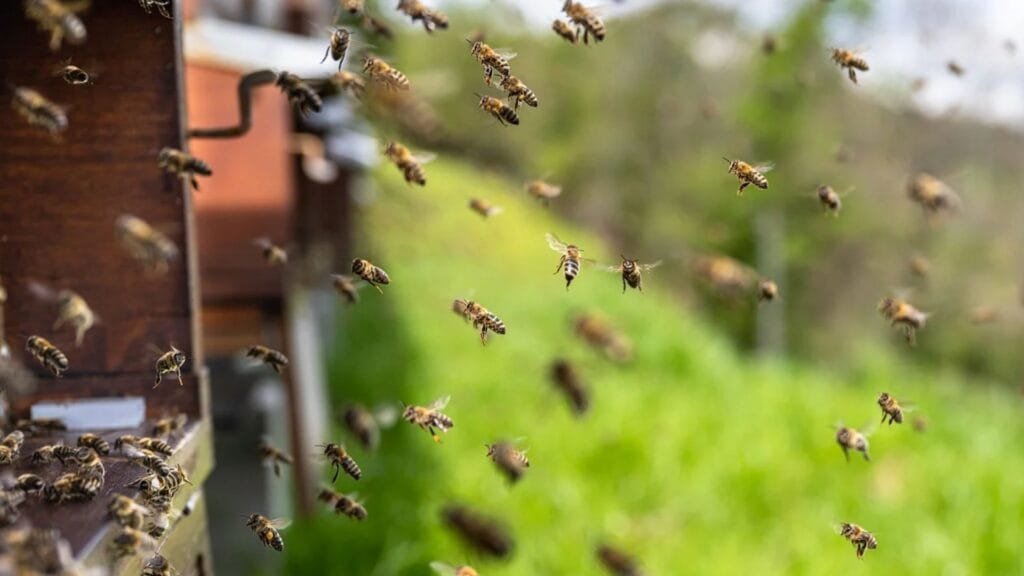The Buzz About Bees: From Idioms to Conservation.
The relationship between bees and the language we use encapsulates a rich tapestry of cultural significance, demonstrating how these industrious insects have influenced our expressions throughout history.
Bee-related idioms and expressions can be traced back to ancient civilizations, where the bee was often seen as a symbol of diligence and teamwork.
For instance, the phrase “busy as a bee” highlights the tireless work ethic attributed to these pollinators, a sentiment that resonates across various cultures.
Historically, bees have played a role in agricultural societies, where their ability to pollinate crops was vital for sustenance.
This importance is reflected in idiomatic expressions that emphasize the hard work and community spirit that bees exemplify.
The term “hive mind,” for example, draws on the collective intelligence observed in bee colonies, conveying the idea that groups often achieve results greater than individual efforts.
Such phrases have evolved to describe everything from teamwork in workplaces to the dynamics of social media behaviours.
The linguistic journey of bee-related expressions reveals not only dependencies on bees for survival but also how they have entered the figurative language through literature and folklore.
Notably, in literature, bees symbolize various themes such as industry, cooperation, and even sweetness, as seen in poetic references.
Over time, these expressions have transformed, adapting to changing societal norms and values while maintaining the core attributes associated with bees.
This adaptation signifies more than a mere linguistic shift; it underscores humanity’s enduring fascination with these creatures and the values they represent.
The more we explore the evolution of bee-centric language, it becomes evident that bees are not just pollinators but they also serve as pivotal symbols in our collective consciousness, showcasing how nature can inspire and shape communication across generations.
The Meaning of 'The Bee's Knees' in Modern Context.
The phrase ‘the bee’s knees’ is an idiomatic expression that has garnered attention over the years, particularly in the context of expressing excellence or high quality.
Its origins can be traced back to the 1920s, a time when it emerged in the English language, coinciding with the Jazz Age, a period very much characterized by cultural innovation and a penchant for intriguing phrases.
Initially regarded as a playful and somewhat whimsical term, ‘the bee’s knees’ has since evolved into a staple in modern vernacular.
Understanding the phrase requires a look at how it has transitioned from a quirky expression to a representation of modern excellence.
Originally, the term was used to denote something that was the best or of exceptional quality.
While the exact reasoning behind The Bees Knees as a symbol of excellence remains somewhat ambiguous, it could maybe be interpreted through the sweetness of honey, the industriousness of bees, and their critical role in pollination, all essential to flourishing ecosystems.
In contemporary usage, ‘the bee’s knees’ has not only retained but also expanded its connotation, often used to praise people, products, or experiences that surpass ordinary standards.
This phrase serves as an affirmation of quality and skill, highlighting a collective appreciation for excellence in various fields, including fashion, food, and creativity.
The most modern context of this idiom that I can think of reflects an ethos that values uniqueness and distinction.
The enduring appeal of ‘the bee’s knees’ lies in its ability to convey positivity and high regard in a lighthearted manner, which resonates with the contemporary sensibilities of communication.
Therefore, when one uses ‘the bee’s knees’ today, it not only signifies admiration but also reflects a cultural appreciation for the remarkable and the extraordinary.
Understanding What It Means To Be A Busy Bee.
The term “busy bee” is often utilized to describe individuals who are consistently engaged in a multitude of activities, typically characterized by a high level of productivity and industriousness.
This personality type implies a strong work ethic, where the individual prioritizes tasks and responsibilities, often displaying a relentless pursuit of goals.
Such personas are frequently perceived positively in society, often associated with diligence, ambition, and an unyielding commitment to achievement.
In professional environments, a “busy bee” may be recognized for their ability to deliver results under pressure, frequently taking on additional responsibilities to demonstrate their capability and dedication.
However, this commendable drive can sometimes lead to a culture where busyness is glorified, overshadowing the essential balance between work and leisure.
The societal pressure to remain productive can create an unhealthy cycle, as we may end up feeling compelled to overextend ourselves in both our personal and professional lives.
Additionally, the narrative surrounding busyness often neglects the importance of rest, which is crucial for long-term productivity and overall well-being.
In contrast to the “busy bee” mindset, prioritising downtime and relaxation can facilitate greater creativity, improved focus, and enhanced problem-solving abilities.
As we reflect on this dynamic, it becomes evident that a culture that solely venerates busyness risks undervaluing the benefits derived from periods of rest and reflection.
Ultimately, while the “busy bee” personality can drive remarkable achievements, it is essential to cultivate an awareness of the balance needed between industriousness and recuperation.
It was Thomas Edison that one said, “Being busy does not always mean real work. The object of all work is production or accomplishment and to either of these ends there must be forethought, system, planning, intelligence, and honest purpose, as well as perspiration. Seeming to do is not doing.”
Embracing constructive idleness may lead to heightened productivity and a more fulfilling approach to both work and life, challenging the prevailing norms around busyness and fostering a more holistic view of personal and professional success.
The Crucial Role of Bees in Our Ecosystem.

Bees play a vital role in maintaining the health and balance of our ecosystem, primarily through their activity as pollinators.
Pollination is a critical process in which bees transfer pollen from one flower to another, facilitating the reproduction of many plants.
This interaction is key not only for the plants’ life cycles but also for the broader biodiversity that depends on those plants.
From what I’ve been reading, around one-third of the food we consume, including fruits, vegetables, and nuts, relies on animal pollination, with bees responsible for a substantial portion of this work.
The connection between bees and plant reproduction is essential for sustaining ecosystems.
When bees pollinate flowering plants, they enable the development of seeds and fruits, which provide food for various organisms, including humans.
This symbiotic relationship supports not only plant reproduction but also promotes genetic diversity in plant populations, which is crucial for resilience against pests and environmental changes.
In this sense, bees contribute to the overall strength and sustainability of the ecosystem. However, bee populations worldwide have been experiencing significant declines due to factors such as habitat destruction, pesticide use, and climate change.
The consequences of these declines extend beyond the bees themselves; fewer bees mean reduced pollination rates, which can lead to decreased plant diversity and the eventual collapse of various ecosystems.
In agricultural contexts, the decline of bee populations can result in lower crop yields, impacting food security and local economies.
Therefore, the conservation of bee populations is not only essential for their survival but also for the health of the ecosystems they support.
Protective measures must be emphasized to ensure that both bees and the ecological services they provide are preserved for future generations.
Australian Native Bees: Unsung Heroes of Pollination.

Australia boasts a remarkable diversity of native bee species, estimated to number over 1,500. These indigenous pollinators are essential to maintaining the health and vitality of the continent’s unique ecosystems.
Unlike the non-native honeybee, which has garnered much public attention, Australian native bees exhibit a variety of specialized traits that enable them to thrive in distinct habitats and contribute to the pollination of our native flora.
Many native bee species, such as the blue-banded bee and the teddy bear bee, have evolved unique pollination techniques that enhance their efficiency.
For instance, blue-banded bees are known for their vibrational pollination method, which involves buzzing at specific frequencies to dislodge pollen from flowers, particularly those with tubular shapes.
This technique not only optimizes their foraging efforts but also ensures the effective transfer of pollen, supporting the reproduction of various native plants.
The teddy bear bee, on the other hand, is known for its distinctive fuzzy body, which allows it to carry more pollen as it interacts with flowers in the Australian bushland.
Additionally, many native bees are solitary, unlike honeybees that live in colonies.
This solitary lifestyle is critical for certain flowering plants that rely on them for pollination, as each bee focuses its efforts within specific territories.
As a result, they contribute significantly to the genetic diversity of Australian flora, which is vital for the resilience of these ecosystems against environmental changes.
Despite their vital roles, native bees often face threats from habitat destruction, climate change, and pesticide use.
Protecting these unsung heroes is essential for preserving biodiversity within Australia’s unique landscapes.
It is crucial to recognize and support their contributions to our environment, ensuring that future generations can enjoy the rich diversity of wildlife that native bees help sustain.
The Role of European Honey Bees in Australia.

The introduction of European honey bees (Apis mellifera) to Australia in 1822 marked a significant change in the country’s agricultural landscape.
Initially brought to enhance honey production and improve crop pollination, these bees have become integral to Australian agriculture, contributing significantly to the country’s honey output, worth millions of dollars annually.
The role of European honey bees in Australia’s agricultural systems cannot be overstated, as they pollinate a diverse range of crops, including fruits, vegetables, and nuts, thereby enhancing food production and quality.
However, the presence of European honey bees has produced a mixed bag of impacts on local ecosystems and native bee populations.
While they are vital for increasing agricultural yields, their introduction has also sparked a few concerns regarding competition for resources with our native Aussie pollinators.
Native Australian bee species, which are uniquely adapted to local flora, may struggle to coexist with the more aggressive foraging behaviour of European honey bees.
As a result, some researchers warn that these non-native bees could potentially lead to the decline of local bee populations and adversely affect biodiversity.
Moreover, the environmental implications of European honey bees extend beyond mere competition.
Their foraging habits can alter the dynamics of local ecosystems, as they may preferentially pollinate certain introduced plant species over indigenous flowering plants.
This behaviour can disrupt ecological relationships and jeopardize the survival of native flora. However, it is important to recognize that European honey bees also play a role in supporting the agricultural economy, generating jobs and providing food security.
The European honey bee has proved to be a double-edged sword in Australia. While they are essential for honey production and agricultural success, their impact on local ecosystems and native bee populations necessitates careful management and ongoing research to ensure ecological balance and sustainability.
Bee Behaviour and Habitats: Social Structures and Nesting.
The behaviour and habitats of bees are crucial for understanding their role as pollinators in ecosystems.
Both native and European bee species exhibit remarkable social structures, which can vary greatly between species.
Honeybees, a prominent example of social bees, live in highly organized colonies consisting of a queen, workers, and drones.
In contrast, many native bee species, such as mason bees or leafcutter bees, are solitary, with females typically nesting alone in specific environments like soil, wood, or hollow stems.
Social bees, particularly honeybees, communicate through a complex system of pheromones and the famous waggle dance, which indicates the direction and distance of food sources.
This collective behaviour is vital for the survival of the colony, as it optimises foraging efficiency.
In densely populated areas, such interactions foster cooperation among worker bees and enhance resource sharing.
Conversely, solitary bees do not exhibit such behaviours; rather, they focus on individual nesting and foraging tasks.
Regarding nesting habits, honeybees construct well-structured hives made from beeswax, offering both protection and a regulated environment.
In contrast, solitary bees often prefer abandoned holes or create their nests by burrowing in the ground.
These varied nesting preferences underscore the adaptability of bee species to their environments and their specific ecological roles, which include pollination of diverse plant species.
While bee stings can pose risks to some people, particularly for those who are allergic, they play a defensive role in protecting their nests.
Honeybee stings, for instance, are a last resort; typically, bees are non-aggressive unless threatened.
Understanding the behaviour and habitat of bees not only enhances our appreciation of these crucial pollinators but also underscores the need for conservation efforts to protect their habitats and the ecosystems reliant on their activities.
Conservation Efforts and How You Can Help Bees.
Native bee populations in Australia are facing significant threats that jeopardize their survival.
Habitat loss due to urban expansion, agricultural practices, and climate change has led to a decline in the number of bee species.
The increasing use of harmful pesticides has adversely affected not only honeybees but also native bee species that are crucial for pollination.
The conservation status of many of these pollinators has raised concern among environmentalists and researchers alike, prompting increased efforts to develop and implement protective measures.
To contribute to the conservation of bees, individuals can take proactive steps in their own spaces.
One of the most effective methods to support bee populations is through the creation of bee-friendly gardens.
These gardens can be designed by incorporating a variety of flowering plants that are native to the local area.
Native plants are especially important as they provide essential food sources for local bee species, ensuring that they can thrive in their natural habitats.
Additionally, including a diversity of flowering plants that bloom at different times throughout the year can sustain bees by providing a continuous supply of pollen and nectar.
Avoiding the use of harmful pesticides is another critical action individuals can take to protect bees.
When gardening or maintaining landscapes, opting for organic pest control methods, such as neem oil or insecticidal soaps, can significantly reduce the risk to bee populations.
Educating oneself about the specific needs of local bee species can further enhance conservation attempts.
Supporting local organizations focused on bee research and conservation, participating in community awareness programs, or volunteering for pollinator-friendly initiatives can also make a meaningful impact.
By adopting these practices and raising awareness, individuals contribute to the survival and well-being of native bees, which play an indispensable role in our ecosystem.
DIY Bee Hotel Guide: Supporting Native Pollinators.
Why Build a Bee Hotel?
Solitary bees, unlike honeybees, don’t live in colonies. They need individual nesting tubes to lay their eggs.
By providing these spaces, you can:
· Support local pollinator populations.
· Increase garden productivity.
· Help conserve native bee species.
· Observe fascinating bee behaviour up close.
Some General Guidelines for All Bee Hotels:
· Place in a sunny, south-facing location.
· Install 3-6 feet off the ground.
· Ensure the hotel stays dry.
· Position away from bird feeders.
· Face slightly downward to prevent rain from entering tubes.
· Install by early spring before nesting season begins.
Option 1: Simple Bamboo Bundle Hotel.
Materials Needed:
· 15-20 pieces of bamboo cane (6-8 inches long).
· Garden twine or strong string.
· Waterproof roof material (small piece of wood or metal).
· Mounting hardware.
Instructions:
1. Cut bamboo into 6-8 inch lengths, ensuring clean cuts.
2. Select pieces with varying hole diameters (3-10mm).
3. Bundle the bamboo pieces together tightly with twine.
4. Attach the waterproof roof above the bundle.
5. Mount securely to a fence post or wall.
6. Ensure the tubes are horizontal or slightly angled downward.
Method 2: Deluxe Wooden Block Hotel.
Materials Needed:
· Untreated hardwood block (6x6x12 inches).
· Electric drill with various bits (4-10mm).
· Wood for roof (cedar works well).
· Screws and mounting bracket.
· Paper straws or cardboard tubes (optional).
Instructions:
1. Drill holes in the wood block:
a. Use various bit sizes (4-10mm diameter).
b. Drill holes 3-5 inches deep.
c. Space holes 1/2 inch apart.
d. Drill holes slightly upward to prevent water collection.
2. Sand the entrance to each hole smooth.
3. Insert paper straws or cardboard tubes (optional).
4. Attach the roof with a 2-inch overhang.
5. Mount securely in a suitable location.
Maintenance Tips:
· Clean out unused tubes in late winter.
· Replace paper tubes annually.
· Monitor for signs of mould or moisture damage.
· Remove and store in a sheltered location during winter in harsh climates.
· Add new tubes or blocks as needed.
Common Mistakes to Avoid:
· Don’t use treated lumber (chemicals harm bees).
· Avoid plastic materials (can cause condensation).
· Don’t make holes too shallow (minimum 3 inches deep).
· Don’t leave the hotel unprotected from rain.
· Avoid using glass tubes (temperature fluctuations).
Signs of Success – Your bee hotel is working well if you observe:
· Tubes sealed with mud (mason/mortar bees).
· Tubes sealed with pieces of leaves (leaf-cutter bees).
· Bee activity during spring and summer.
· Different types of sealing materials used.
It’s worth remembering that it may take a season for bees to find and start using your Bee Hotel. So don’t despair if your hard work doesn’t show any results straight away.
Be patient and maintain the hotel well for the best results.









[…] https://www.healthisrock.com/busy-bees-are-the-bees-knees/ […]
[…] 7. Busy Bees are the bees knees & we need more […]
[…] 7. Busy Bees are the bees knees & we need more […]
[…] BUSY BEES ARE THE BEES KNEES AND NEED MORE. […]
[…] BUSY BEES ARE THE BEES KNEES IN OUR SOCIETY […]